
- Home
- News
- Analysis
- States
- Perspective
- Videos
- Education
- Entertainment
- Elections
- World Cup 2023
- Features
- Health
- Business
- Series
- Economy Series
- Earth Day
- Kashmir’s Frozen Turbulence
- India@75
- The legend of Ramjanmabhoomi
- Liberalisation@30
- How to tame a dragon
- Celebrating biodiversity
- Farm Matters
- 50 days of solitude
- Bringing Migrants Home
- Budget 2020
- Jharkhand Votes
- The Federal Investigates
- The Federal Impact
- Vanishing Sand
- Gandhi @ 150
- Andhra Today
- Field report
- Operation Gulmarg
- Pandemic @1 Mn in India
- The Federal Year-End
- The Zero Year
- Premium
- Science
- Brand studio
- Home
- NewsNews
- Analysis
- StatesStates
- PerspectivePerspective
- VideosVideos
- Entertainment
- ElectionsElections
- Sports
- Loading...
Sports - Features
- BusinessBusiness
- Premium
- Loading...
Premium
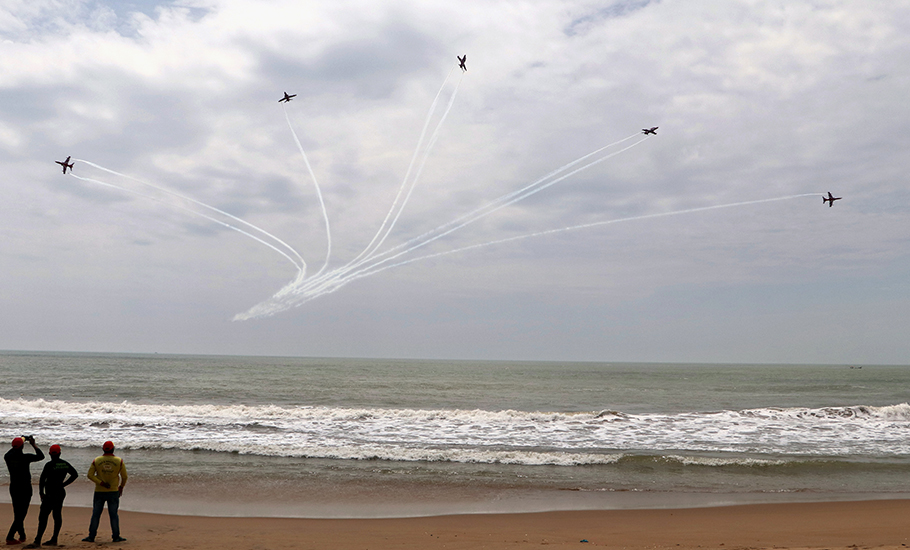
Suryakiran in photos: How the top guns keep the Indian flag flying high

As the Suryakiran Aerobatics Team (SKAT) of the Indian Air Force begins its fresh public display season this year, The Federal tried to capture how the daredevil pilots put up the airshow that leaves the spectators with hearts in their mouths. The members of the nine-aircraft team, the only nine-aircraft team in Asia, begin training with one aircraft and go on adding one at time as they...
As the Suryakiran Aerobatics Team (SKAT) of the Indian Air Force begins its fresh public display season this year, The Federal tried to capture how the daredevil pilots put up the airshow that leaves the spectators with hearts in their mouths. The members of the nine-aircraft team, the only nine-aircraft team in Asia, begin training with one aircraft and go on adding one at time as they get better every step of the way.
As thousands of people gathered on the blue-flag certified sea beach in Puri on a rain-drenched Sunday morning, their eyes were fixed on the cloudy sky above. As the weather cleared briefly and the clock struck half past 10, the crowd turned excitedly impatient, craning their necks in every direction scanning the sky.
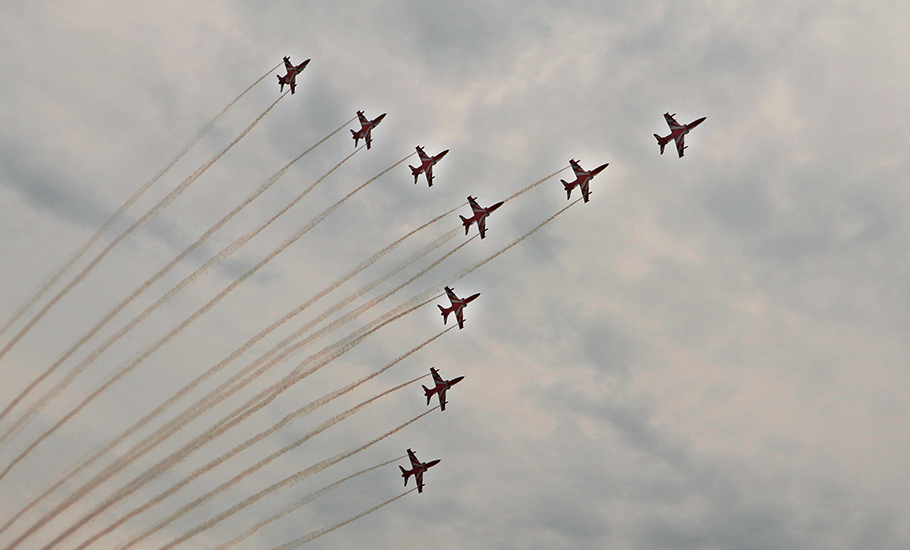
A few minutes later, the area revved up with the roar of the engines and the Hawk Mk 132 Suryakiran aircraft emerged, tearing through the clouds, as the crowd broke into a cheer. This was the Suryakiran Aerobatics Team’s (SKAT) second public display this season after performing the first airshow in Bhubaneswar a couple of days earlier.
Led by team leader, Group Captain GS Dhillon, the fighter aircraft made an entry in their usual nine-formation and then broke away to perform a range of dangerous manoeuvres — from loops to rollbacks to dives and inverted flying.
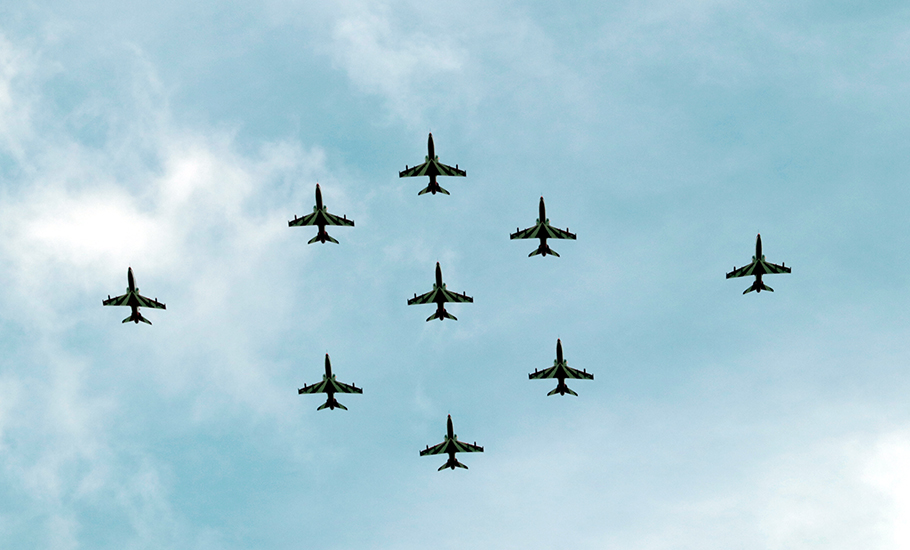
The SKAT team is the only nine-aircraft team in Asia, and has performed in nine foreign countries. The airshow usually lasts around 22 minutes on an average, and the duration can change depending on the weather on the given day.
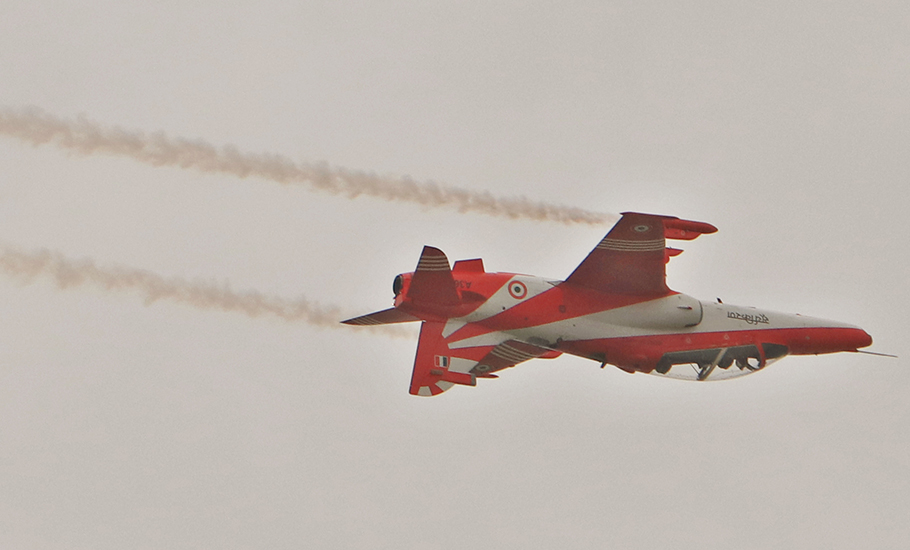
The average control inputs per sortie can range between 3,000 and 4,000 in a 24-minute display show, requiring a high level of discipline, skills, teamwork and exemplary courage among the crew.
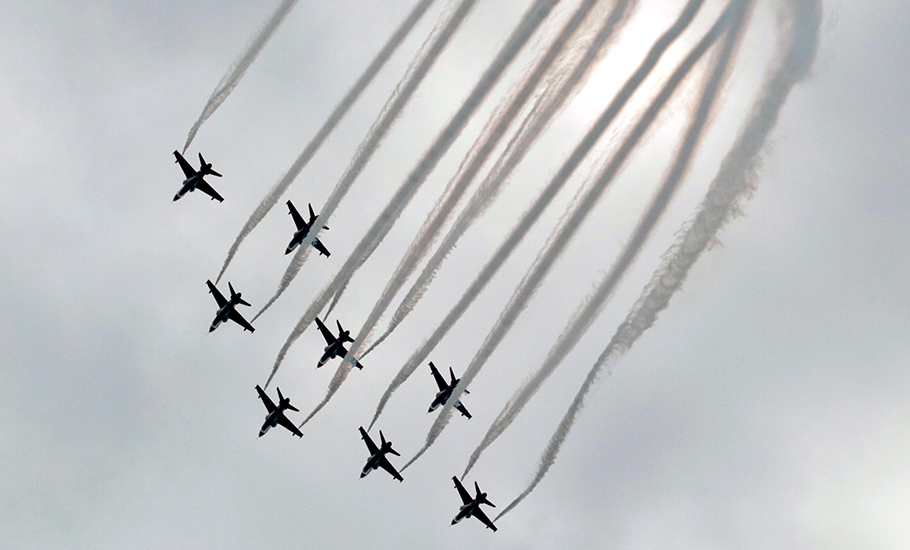
So how is this achieved?
“When a Suryakiran pilot is selected, he undergoes a basic Hawk training to get used to the aircraft and the procedures. Slowly, we build him up and he then flies a single aircraft at low levels. Then we progress to two aircraft which are called two-shift and then gradually on to three, four and then six aircraft. When the pilot and the team are confident, he is introduced in the nine-formation flying, and completes at least 10 to 12 sorties before getting cleared to perform the public display. The average duration for the progression takes around six months,” Group Captain GS Dhillion told The Federal.

The SKAT team currently has 16 members — nine pilots, two trainees, three engineers (technical staff), a team doctor and a team commentator. The display season begins every September and ends in March the following year. For every venue chosen, there is at least one full-dress rehearsal before the final show.
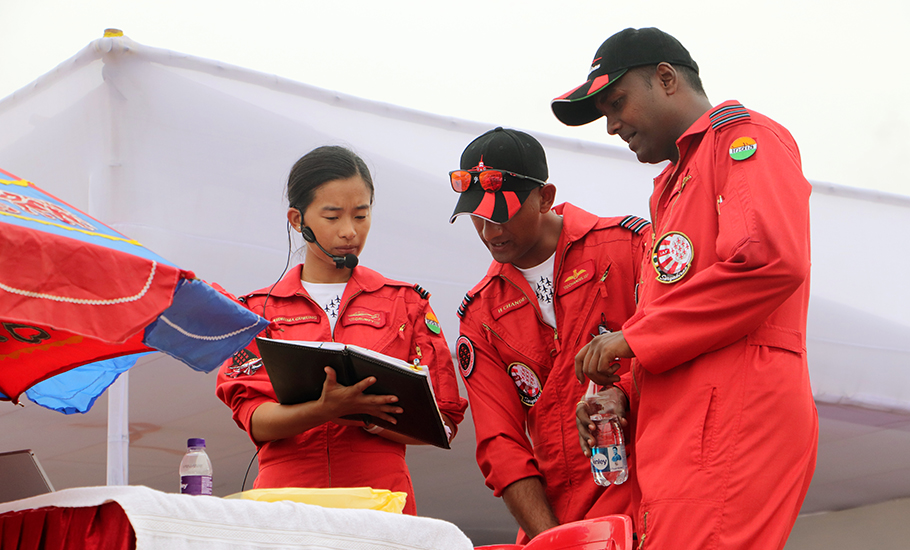
“We conduct mapping sorties to mark the obstructions and finalise the markers. When we train at our base in Bidar, Karnataka, we do it with respect to a linear feature like the runway, which is easier. But when we perform at a venue — for instance, we performed over a riverbed in Bhubaneswar which has its own turns and curves — we rely on our specialised non-linear training sessions conducted at our base,” says Wing Commander Ashwin Prasad, a trainee pilot with the SKAT team.
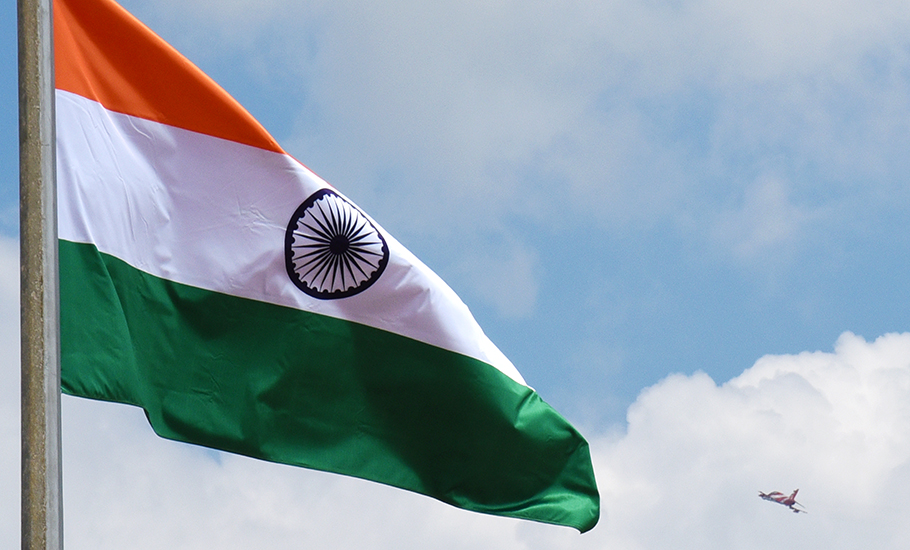
The aerobatics team which was resurrected in 2015, uses the Hawk Mk 132, a single-engine advanced jet trainer of UK, which is assembled by Hindustan Aeronautics Limited in India and has an ability to carry bombs, rockets and missiles. The ceiling altitude of the aircraft is 48,000 feet but the displays are usually performed between 100 feet to 3000 feet.
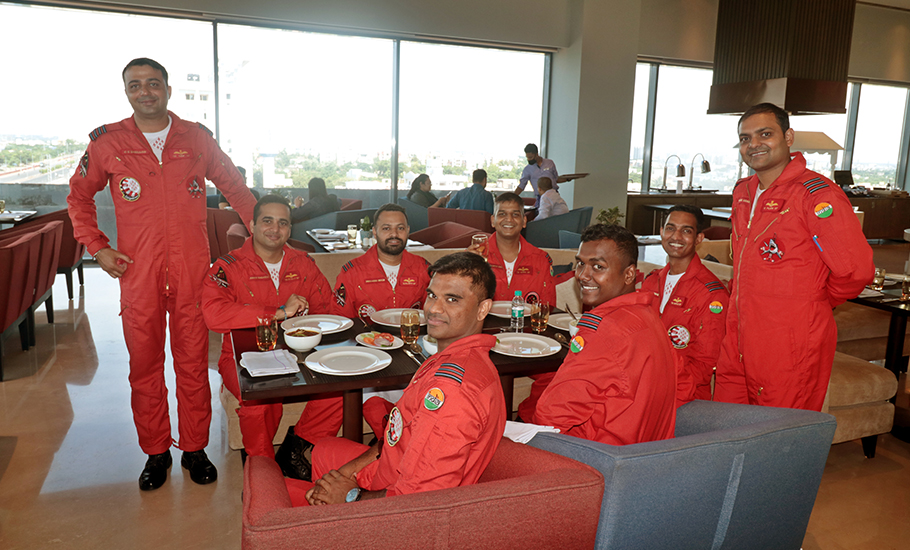
“It is complete teamwork. Each of us has a specified role which we need to carry diligently. My role as a team commentator is to connect between the audience and the aircraft, without being too technical. If you see them flying at any point, they are at a mere distance of 5m away from each other. It takes an exceptional amount of training to do what we do and inform the crowd on what amount of skill, precision and hard work goes into creating a symphony in the air,” says Flight Lieutenant Riddhima Gurung, the only woman officer in the squad.
The next Suryakiran show is slated to be held in Guwahati on September 26 and 27.

